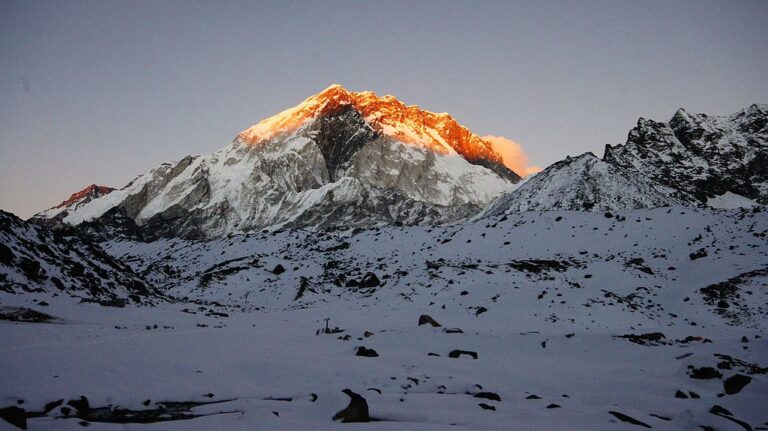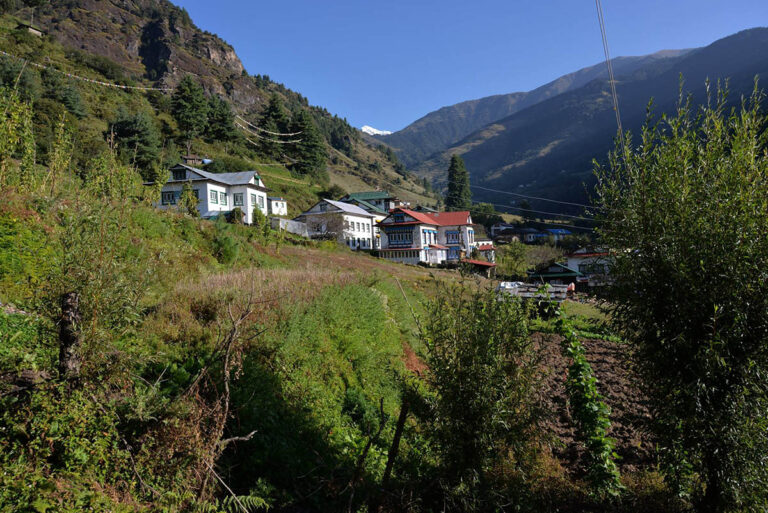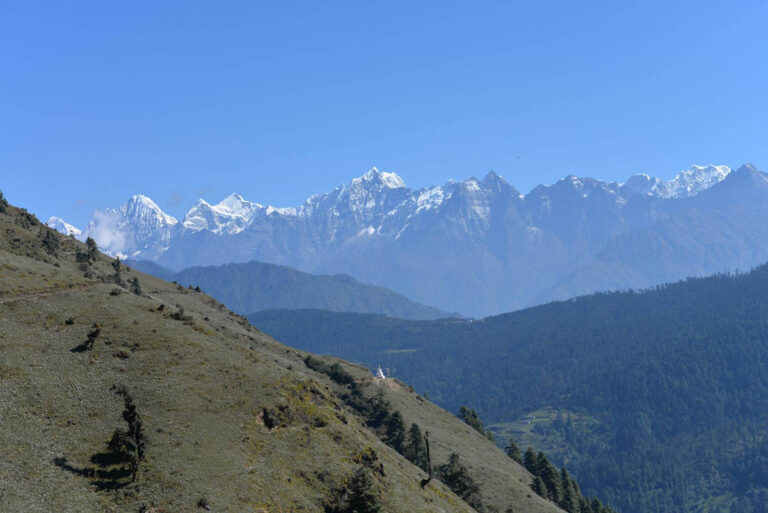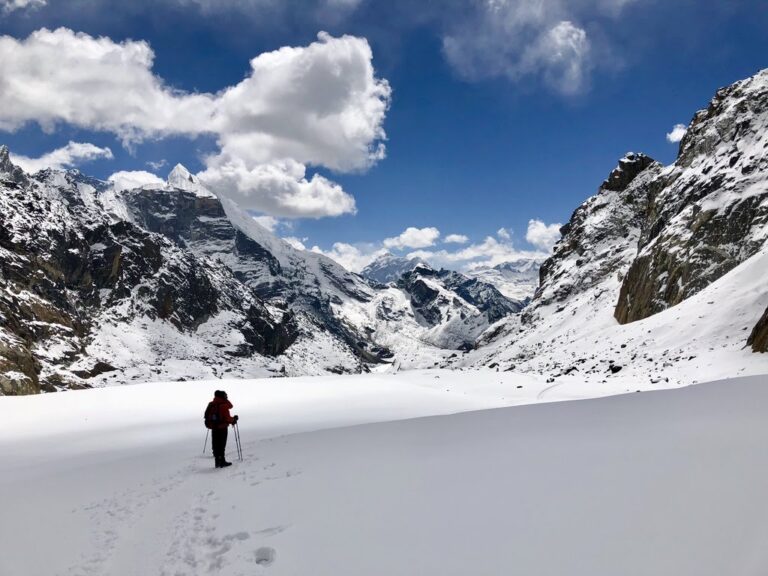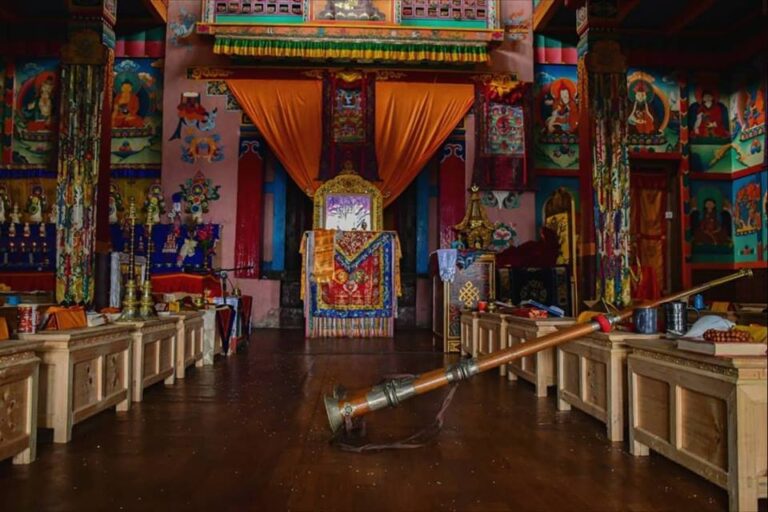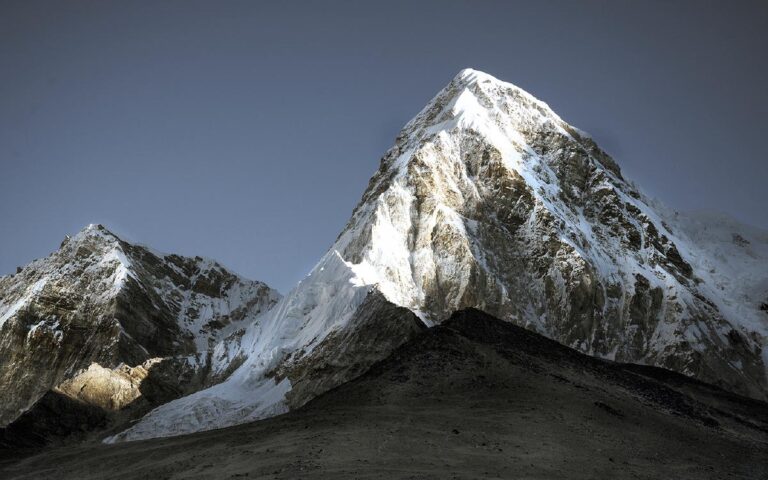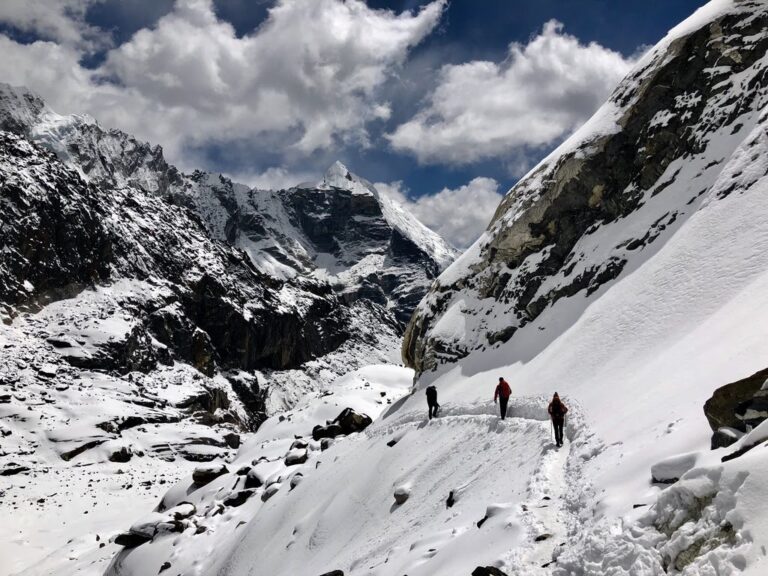Day 01 – Pick up from the Tribhuwan International Airport of Kathmandu on your arrival date and transfer to the hotel. Your hotel will be reserved in center of the Thamel; which is one of the main tourist hubs in Kathmandu city.
Day 02 – Exploration of Kathmandu valley – sightseeing to the historical and ancient places around the Kathmandu valley like: Pashupatinath temple, Boudhanath stupa, Patan Durbar square and Swayambhunath; which is also known as monkey temple due to moving hundreds of monkeys around the temple.
Day 03 – Drive to Jiri Bazaar (1950m.a.s.l) – 6 hours drive – we will drive approximately 6 hours to get Jiri bazaar which is a beautiful hamlet inhabitant by the Jirel, Magar and Brahman peoples. The road passes through the paddy-terraced field, forested hills and bank of the huge rivers called Bhotekoshi and Tamakoshi; which are very famous for the river rafting. During the driving period some of the view point commands to see stunning view of Gaurishankar and pikey peak and its beautiful ranges. There are dozens of guest houses in Jiri bazaar and propose to explore a beautiful monastery.
Day 04 – Trek to Shivalaya 1(790m.a.s.l) – 6 hours walk – begins of the morning; we walk on the road for 15 minutes then the trail ascend pass by the Ratmate and Chitre village then after one hour walk; appear a view point called Mali hill top that offers to see beautiful landscapes, green forest and paddy farm. From Mali hilltop the trail gently descend to the Shivalaya through the forested trail and pass by small villages. The Shivalaya village is settled just bank of the Khimti River and surrounded by the green hills. There are half dozens of guest houses and provides comfortable, neat room and delicious meals.
Day 05 – Trek to Bhandara village (2190m.a.s.l) – 5 hours walk – The trail gently ascend from the yard of the guest house and leads through the tropical forest to get Banjghari village where possible to drink hot and cold drinks from the small tea-shop. After teashop we will do often short climb and downhill trail to get Deurali village which is a beautiful village and a viewpoint to see splendors of Gaurishankar Himal. From Deurali village; we will walk down approximately one and half hours to get Bhandara village where we sleep one over night with great hospitality of local people.
Day 06 – Trek to Goyam village (3220m.a.s.l.) – 5 hours walk – The trail passes through the beautiful village for one and hour then appear a suspension bridge. We will cross the bridge and head to Kinja village; which is a beautiful village and inhabitant by the Jirel people. From here the trail gently ascend to the Goyam village. The ascended trail purpose to see beautiful terraced field, green forest charms landscape. There are three guesthouses in Goyam village and offers neat and comfortable bed.
Day 07 – Trek over the Lamajura pass and trek down to Junbesi village (2710m.a.s.l) – 5 hours walk – The gradual up trail leads through the rhododendron and pine forest to get Lamajura pass which may takes an approximately two hours. The Lamajura pass offers to see beautiful view of Gaurishankar Himal to the northwest and kongde peak to the northeast. From here we will walk down an approximately three hours to get Junbesi village and offers to explore a beautiful monastery.
Day 08 – Trek to Nunthala (2194m.a.s.l.)-7 hours walk – begin of the morning we trek on a gradual trail for one and half hours to get Phurteng Danda which is a beautiful view point to see Everest, Nuptse and Mera peak. From the Phurteng Danda trail descend to the small stream called Gngbo khola and we will climb up an approximately two hours to get Taksindu village pass by Ringmo village with the view of Nangpa, Nangpateng peak and some old artistic chhortens. From the Taksindu -La pass we will descend an approximately three hours to get Nunthala village pass by a huge and beautiful Taksindu Monastery.
Day 09 – Trek to Bupsa (2705m.a.s.l) – 6 hours walk – we have to walk down an approximately two hours to get Dudh Koshi river and cross the river on a 100 meters long suspension bridge and we will climb up hill trail about 4 hours to get Bupsa village pass by a Rai village called Jubbing and Kharikhola with the view of green hills, forest and agricultural terraced filed. There are dozen of good guest houses in the Bupsa village and offers to visit a small but very beautiful monastery which is built just top of the Bupsa village.
Day 10 – Trek to Surke khola (2290m.a.s.l) -5 hours walk – we will ascend for one hour to get Kari Danda that offers to see beautiful view of Kongde peak and deep gorge of Dudh koshi river. After that the trail is mostly flat and leads through the green forest and pass by Paiya village. The map doesn’t show the Surke khola but it is located just bottom of The Lukla airport and there are a few of lodges providing bedrooms and meals to the trekkers.
Day 11- Trek to Phakding village (2640m.a.s.l) – 6 hours walk – after one and half hours climb up hill trail; we will be n Muse village which is neighbor village of Lukla airport and trek continuously to Phakding village pass by Chheplung, Chaurikharka, Thadokoshi and Ghat village with the view of Konde peak, Kusum Kangaroo peak, monasteries and Mani artistic Mani walls and prayer flag.
Day 12 – Trek to Namche bazaar (3440m.a.s.l)- 6 hours walk – the trail leads just bank of the Dudh koshi river pass by many Sherpa settlements called Toktok, Benkar, Monjo and Jorsalle village with the view of Thamserku peak, green hills and some beautiful waterfalls. From the jorsalle village trekkers have to walk on the flat trail about 30 minutes to get Larja dobhan where can be seen awesome two hanging bridge over the one river and have to climb up about one and half hours to get Namche bazaar through the pine and Rhododendron forest.
Day 13 – Acclimatization day – Normally trekkers spend two nights in Namche bazaar to do acclimatization and sight walk. There are many sight trip around the Namche bazaar but still among of them sight trip to Everest view point is being very popular due to see good view of Taboche, Thamserku, Amadablam, Kongde peak and including mount Everest. The Everest viewpoint is located just north side of the Namche bazaar and can be reach after one and half hours climb from the guesthouse or Namche bazaar.
Day 14 – Trek to Tengboche (3860m.a.s.l) – 6 hours walk – we have to climb up about 15 minutes to get top of the Namche bazaar then we will walk an approximately two hours on the flat trail to get Kyanjuma village with the view of Amadablam, Taboche, Thamserku and the deep valley of Phungitanga. Kyanjuma village is a trail junction for Gokyo valley and Everest base camp so we will turn to the right hand side and trek down an approximately one and half hours to the Phungitanga through the pine and Rhododendron forest. From Phungitanga village we have to climb up about two hours to get Tengboche on a rocky step-hill trail.
Day 15 – Trek to Dingboche village (4410m.a.s.l) – 5 hours walk – early in the morning we explore the Tengboche monastery which is believe to be 600 years old and trek towards to Dingboche village pass by Dibuche, Milingo, Pangboche and somare village which are Sherpa villages and Buddhist area thus along the trail trekkers see many artistic Chhortens, Monasteries and Mani walls which are made of thousands of stone slabs carved with deities and Buddhist incantation like OM MANE PADME HUM. The trek from Tengboche to Dingboche commands to see beautiful view of Amadablam, Cholatshe, island peak, Lhotse shar and stunning view of the Nuptse.
Day 16 – sight trip to Chhukung valley (4730m.a.s.l.)- 5 hours walk – most of the trekkers head to Lobuche from the Dingboche village but to do sight trip to Chhukung valley would be very good idea to be well acclimatized with the local environment and the Chukung valley is one of the beautiful valley of the Khumbu region that commands to see closer view of Lhotse shar, Island peak, Chukung peak, shritshe, Nuptse and beautiful view of the glacier of Lhotse and Lhotse shar.
Day 17 – Trek to Lobuche (4910m.a.s.l) – 5 hours walk – begin of the trek we will climb an approximately 25 minutes to get small hill top which is a very good view point to see panoramic view of high Himalayas and Chhukum valley. From here the trail ascend gradually until Thukla village, on a grassy land with the view of Pheriche village and closer view of Cholatshe and Amadablam. From the Thukla village we will climb up to Dhungla Danda where can be seen hundreds of tombs of who loose the life in expeditions of the Everest and other mountains of Khumbu region. From the Dhungla Danda we walk another 40 minutes to get Lobuche with the splendid view of Pumori, Nuptse, Lobuche peak, Lingritshe and its beautiful places.
Day 18 – Trek to Gorakshep (5140m.a.s.l) – 3 hours walk – most of time we will walk on the flat and gradual up trail to get Gorakshep with the marvelous view of Pumori, Lobuche peak, Amadablam, Nuptse, Lingtren and Khumbutshe. After lunch in Gorakshep most of the trekkers head to Everest base camp but to go Kalapathar in the afternoon would be very good due to see panoramic view of trans Himalaya and the sunset view on the background of all mountains.
Day 19 – Trek to Dingboche (4410m.a.s.l.)- 6 hours walk – we will return back to Dingboche, the trail from Gorakshep to Lobuche is easy walk that already we have been stepped and seen the all mountains views and glacier. After Lobuche we will turn to the left hand side trail and head down to the Pheriche and Dingboche valley with the view of Cholatse, Amadablam and its beautiful ranges. Dingboche is neighbor village of Pheriche that offers to see better view than Pheriche.
Day 20- Trek to Tengboche (3860m.a.s.l) -5 hours walk – today we will walk to the Tengboche village pass by many villages called somare, Pangboche, Diboche and milingo which are settlement of Sherpa people and offer us to see many Chhortens, Stupa, Mani walls and as well as very old monastery in Pangboche village. Tengboche village is located just atop of the hill and commands to explore 600 years old monastery; which is known as Tengboche Monastery.
Day 21 – Trek to Namche bazaar (3440m.a.s.l) – 6 hours walk)– the trail gently descend from the yard of the guest house to the Fungitanga village that may takes an about two hours and we will climb an about one and half hours to get Kyanjuma village through the pine and Rhododendron forest with view of mountain vista and green hills. We will have our lunch in Kyanjuma village then two hours pleasant walk take us to Namche bazaar.
Day 22 – Trek to Phakding village (2610m.a.s.l.) – 5 hours walk – begin of the morning we will walk downhill trail an about one hour to get Larja dobhan then rest of the trek to Phakding village is very pleasant walk due to walk through the forest with the view of green landscape and vista stunning view of Thamserku peak.
Day 23 – Trek to Lukla bazaar (2840m.a.s.l) – 5 hours walk – we will pass many Sherpa villages called Ghat, Thadokoshi, Chheplung and Chaurikharka with the view of Kusum kangaroo and Kongde peak. Along the trail we will see many chhortens, Stupa, monasteries and Buddhist incantation; which are carved on the huge rocks of the center of the trail.
Day 24 – fly back to Kathmandu – early in the morning we will fly about 30 minutes over the mountain, awesome green landscape and agricultural terraced field.
Day 25 – Final departure – After successful trip; you will fly back to your home with great experience of Nepal and many tales about Himalaya, culture, Traditions and colorful Nepali peoples.
